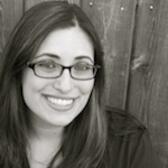The "Women's Pages": Then and Now
Recenytly, Ruth Rosen wrote in the Ms. Magazine blog that the "women's pages" of the 1950s and 60s have been reincarnated on the internet. While she acknowledges the differences in content between those women's pages (society, cooking, and fashion) and today's "women's pages" (analytical coverage of events, trends or stories overlooked by mainstream news), she argues that the designation of separate women's sections keeps us tied to the assumption that women's stories don't belong on the front page.
In response to Ruth Rosen, Kim Voss wrote in to remind us that the "women's pages" of the 1950s and 60s were more than just "society, cooking, and fashion" fluff. She argues that by mixing bits of the progressive in with the traditional, women’s page editors were able to get their serious content about women's liberation published and reach women previously unexposed to feminism. I would add that The American Jewess was taking this approach way back in 1896. Its editor, Rosa Sonneschein, was mixing progressive feminist content with homemaking, health, and beauty tips. You can see the blend come together in the @AmericanJewess Twitter feed.
But getting back to modern day, Rosen mentions a bunch of news sites that have created special women's pages, including Salon.com's Broadsheet, Slate.com's Double X, and PoliticsDaily.com's “Woman Up.” She also mentions stand-alone blogs and magazines for women, such as Women’s eNews, Feministing, Jezebel, and the Ms. blog.
I was curious to see how Jewish online publications currently handle "women's pages." There are a whole bunch of blogs for women, like ours, that deal exclusively with Jewish women's issues, or other topics of interest to Jewish women. As for mainstream news and culture sites, JTA, a global Jewish news website, has no women's section. Neither does The Jewish Week, Tablet Magazine, or Moment Magazine. The Jewish Daily Forward, however, does have "women's pages" -- their Sisterhood blog, which happens to be one of the most popular pages on the website.
Last week Dina, who blogs here and at from the rib?, wrote about the Forbes list of top women's websites. She pointed out the difference between blogs or sites for women and blogs or sites about women's issues. Those that deal with women's issues, or feminist issues, should be read by both men and women. As Michael Kimmel explains, men need feminism too. A great example of this put into practice is MyJewishLearning.com. My Jewish Learning does not have a special section for women. Instead, it lists Gender & Feminism under "Issues," along with Nature & the Environment, War & Peace, and Bioethics. But are all "women's pages" bad news for feminism, as Ruth Rosen suggests?
Again, I have to agree with Dina here. She wrote, "men can be feminists, but they can’t usually be women." There is still a market for blogs and sites for women because, as Dina so eloquently put it, "there is more to being a woman than being a feminist." Perhaps some topics, like menstruation or breast-feeding for example, lend themselves to spaces designated for women.
As the success of the Sisterhood blog demonstrates, Jewish women do value our sisterhood. There is a purpose to having spaces for women. We must make sure, however, that gender and equality issues -- feminist issues -- continue to make the front page. As My Jewish Learning understands, gender and feminism are not just for Jewish women. Like the environment and bioethics, gender and feminism are Jewish issues that affect all of us.







I have to agree with Kim Voss about the women's pages of the 1950s and '60s, and would go her one better. The truth is all women's magazines, not just women's pages, have offered multiple, and sometimes conflicting, images and ideas about women and gender. Those competing discourses, in fact, have been a hallmark of the women's magazine as a media form, and a lynchpin of its social identity, from the very start of the tradition (in the U.S., in the 1790s). It's built into the form itself -- and so tensions can still be found, even in the sophisticated, highly professionalized magazines of today. Read any Glamour, Redbook, O, Self, Marie Claire... Monolithic ideas of gender identity Ì¢âÂÛÏ traditionalist, careerist, feminist, consumerist, and more Ì¢âÂÛÏ continue to be both constructed and questioned in their pages. I think that's a major reason women's magazines have remained so popular with readers for over two centuries -- despite dramatic changes in middle class women's lives and media options over that time. WomenÌ¢âÂã¢s magazines give audiences a chance to see and create for themselves more than one gender identity, more than one story. And the prerogative to select from among the elements; to critique, adopt, dismiss and build at will; to develop our own narratives and meanings; this is fun -- and, within limits of course, can be self-actualizing.